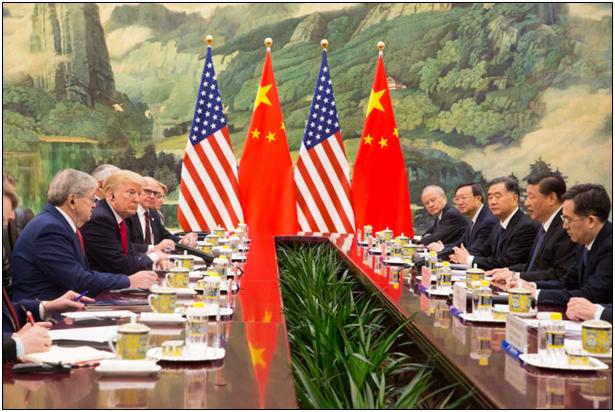U.S. and China trade negotiators once again have a deal in principle on a first stage trade agreement, just days before a Dec. 15 deadline when President Donald Trump had threatened to further increase tariffs on Chinese goods.
This would be about the third time such an agreement was announced, so don’t be surprised if both sides are back to the drawing board in short order. But for the time being it’s a deal, under which current U.S. tariffs on China — currently 25 percent on $250 billion and 15 percent on $111 billion — could be eased in exchange for Chinese commitments on purchasing $50 billion of U.S. agricultural and other goods, stronger intellectual property protections, financial services and currency.
But any easing of pressure on tariffs is only provisional, dependent on Chinese compliance with the agreement, according to the Wall Street Journal: “Should China not carry out its pledges as part of the potential deal, the tariff rates would return to their original levels, a clause known in trade talks as a ‘snapback’ provision.”
This is the real key here. In adopting a Reaganesque “trust but verify” approach to reaching a trade deal with China, Trump is keeping all options on the table. Tariffs can be eased, but if they violate the deal, he’ll put them right back on promptly.
Which, by the way, is precisely what blew up the deal in May. China has been fighting to get rid of these snapback provisions the entire time, and each time, Trump has kept them in the agreement.
In fact, every time China balks on the trade agreement, the tariffs just keep getting higher.
The same thing happened in May when Beijing reneged on the deal that was to include provisions on intellectual property theft, forced technology transfer, financial services and currency manipulation.
In May, if Beijing had taken the deal, at that time it was 10 percent on $200 billion — $20 billion — and 25 percent on $50 billion — $5 billion. Together that was $25 billion of tariffs if Beijing had simply accepted the deal in May. With the tariffs increased to 25 percent on $250 billion, or $62.5 billion
Now with the new deal, the tariffs might be reduced by as much as half, but that’s still higher than they would have been in May if China had just stuck to the original deal. Now, instead they are $31.25 billion instead of $25 billion.
Trump spoke of the impasse at a speech to the New York Economic Club on Nov. 12, explaining that because China broke the deal, that is why he raised the tariffs in the first place, “We had a deal. This gentleman can tell you, we were so close to a deal. The hard points were negotiated: opening up China, intellectual property, all sorts of tremendous penalties. And then, one day, we get a call — seven months ago, we get a call, they’d like to see us. And we saw them, and they explained why they can’t do three or four things that were already agreed to. And I said, ‘Okay. Hey, look, I’m in the real estate business in New York. I’ve heard that before.’ Sadly. It wasn’t like,’Oh, gee, I’m so shocked.’ But I was a little surprised. You know, it’s China. They’re not supposed to do that. But they did. And I’ll tell you what: I’ll bet you they wished they didn’t do it. Then I put on 25 percent tariffs on everything coming in — on the first $250 billion of product.”
The longer Beijing waits the worse it gets. That’s Trump’s art of the deal to use his leverage.
And if they skunk this deal, too, then the tariffs will probably go up to 30 percent. With the tariffs at their currently modest levels, the U.S. trade in goods deficit with China fell 12.8 percent in the first nine months of 2019, or $38.5 billion, compared to 2018, according to the latest data from the U.S. Census Bureau.
China needs to realize it has a lot more to lose by not making a deal with Trump — while they still have the chance. Their stalling has cost them tens of billions of dollars and if they do it again, the tariffs are going to go much higher. So make his day, but either way, Trump keeps winning.
Robert Romano is the Vice President of Public Policy at Americans for Limited Government.







